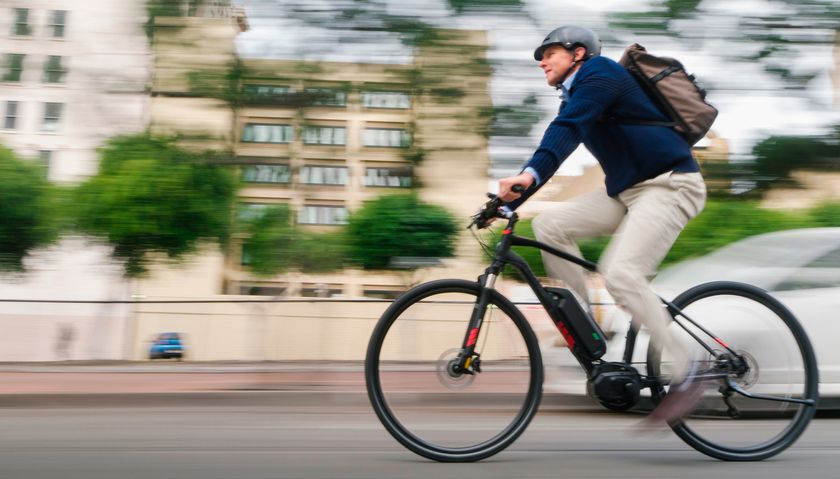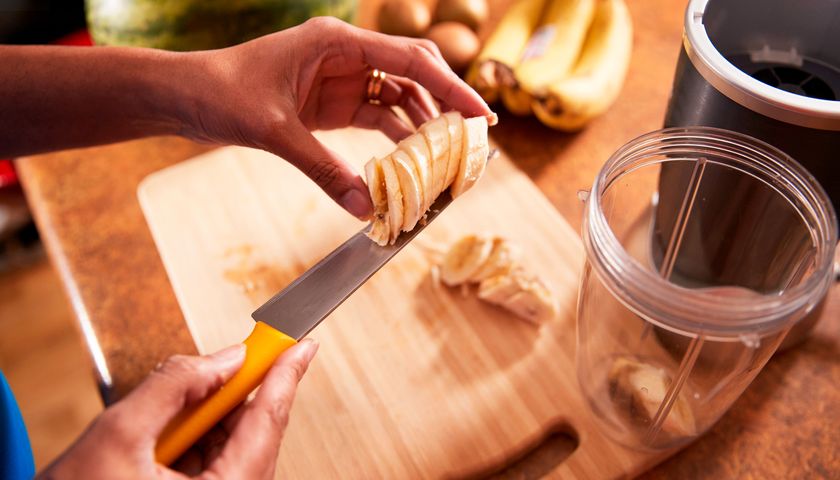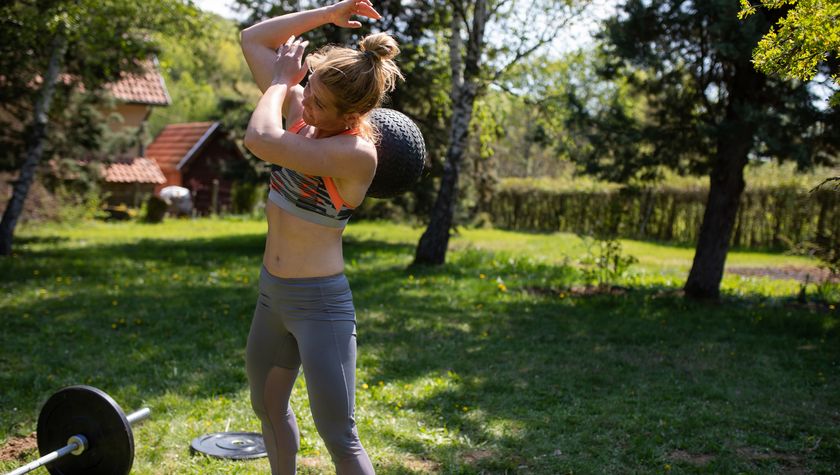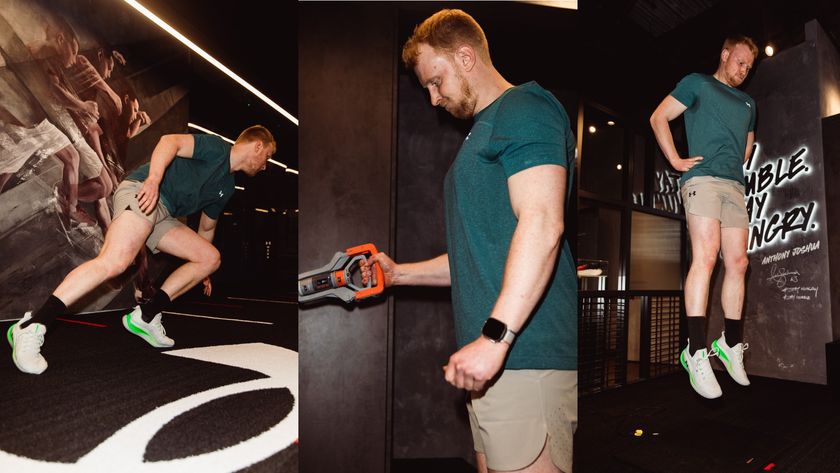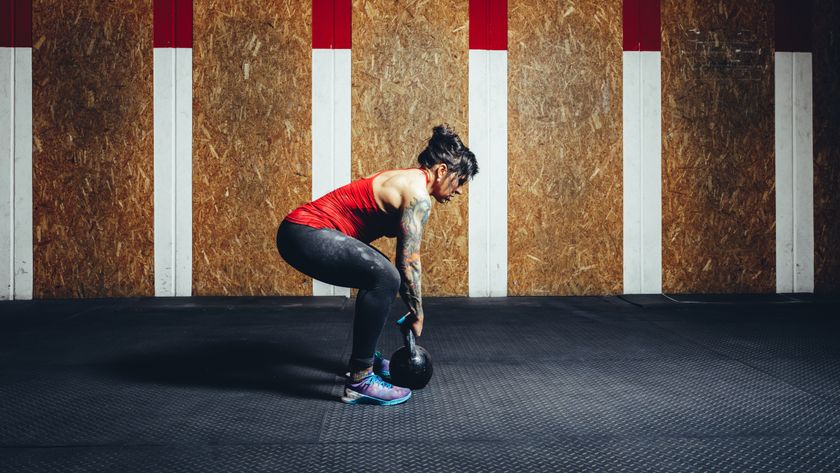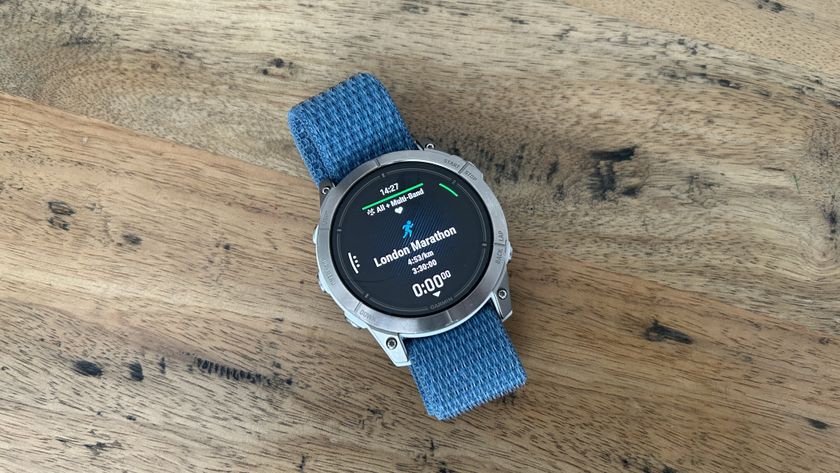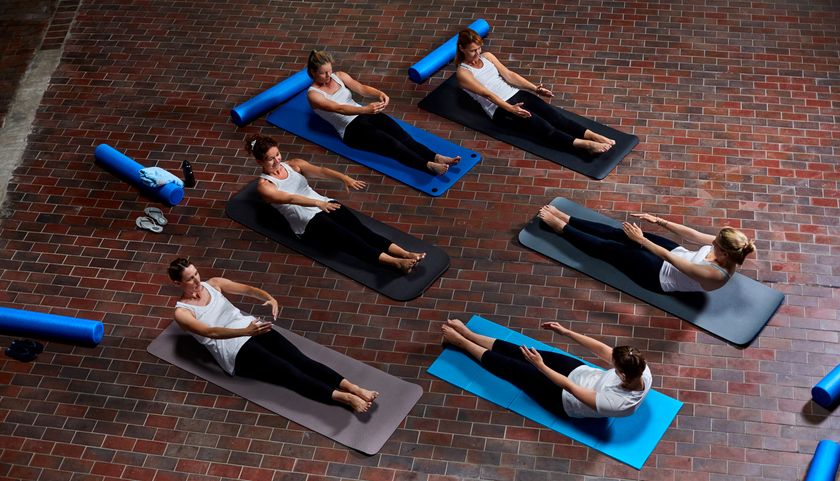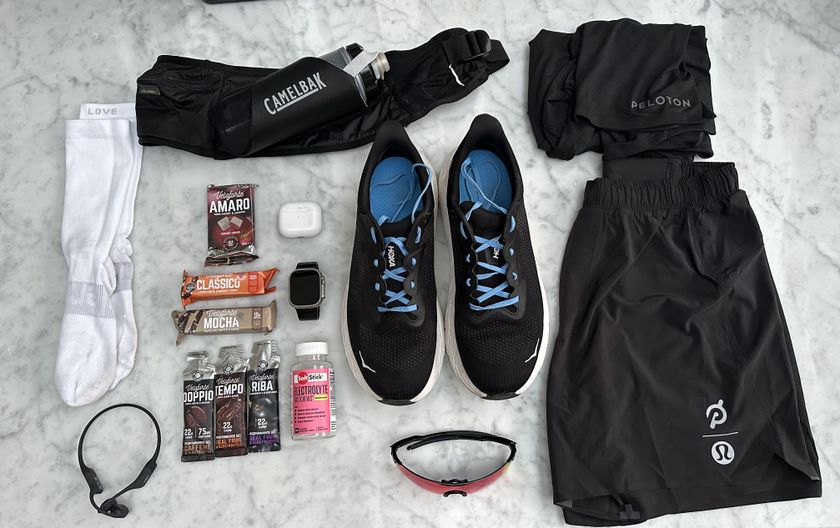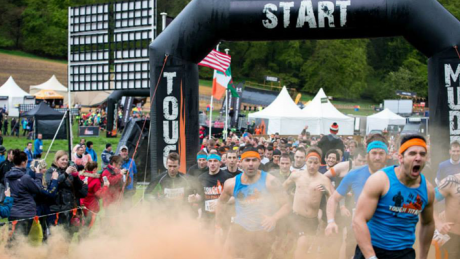
Obstacle course races have dramatically increased in popularity in recent years, in large part thanks to the global success of Tough Mudder. But they’re not just an alternative challenge for hardened fitness fiends – they’re also a first major event for irregular exercisers who have little interest in tackling the traditional physical tests of half marathons, marathons or cycling sportives.
If you’re a beginner you may be wondering how to prepare for a Tough Mudder, an event that requires you to run almost a half marathon while overcoming more than 20 obstacles. Well, wonder no more: here’s a beginner-friendly eight-week training plan that will get you to the start line in peak condition.
Before you begin training it’s worth evaluating your current fitness level. A Tough Mudder is a test of both strength and endurance and if you’re primarily a runner or cyclist, you might have decent cardio fitness but lack the strength and just as importantly grip strength required to get past the obstacles. Conversely, if you’re a weights room regular, you might need to focus on building your stamina. To ensure you complete (and enjoy) the race, tailor the plan slightly to improve your all-round fitness if necessary.
Read on for our complete eight-week Tough Mudder classic training plan, but if you’re looking for something that will help you overcome a Tough Mudder 5K – a shorter course without the mud, ice water or electric shocks – the main things to address are getting comfortable running 5K and improving your core strength. For starters, follow this couch to 5K programme and work on some beginner core exercises three times a week.
Tough Mudder Training Plan
“This programme combines endurance and strength training to mimic the challenges you’ll face on race day,” says personal trainer Glenn Higgins, founder of Glenn Higgins Fitness. “Run and train outside where you can or you’ll get a shock on the day.”
Keep following the workout and you should see your scores improve as race day gets closer. But don’t forget that Tough Mudder is not just a physical challenge – our guide to staying mentally strong will help you stay the course.
Most of the moves require no kit, but you will need dumbbells, a medicine ball and a kettlebell. When doing moves with weights, choose a weight that make it challenging but possible to complete all the sets. If it starts to get easier, increase the weight.
Get the Coach Newsletter
Sign up for workout ideas, training advice, reviews of the latest gear and more.
See related
- How To Conquer Tough Mudder’s New Obstacles For 2019
- The UK’s Best Obstacle Course Races And Mud Runs Of 2021
Exercise Guide
You’ll be tackling all of the following exercises and more in Higgins’s training plan, so make sure you know how to do them.
Bear crawl: Crawl around on your hands and feet without letting any other part of the body touch the ground.
Box jump: Stand in front of a 50cm-high box. Lower into a quarter squat, then jump up so you land on the box with both feet. Aim for as soft a landing as possible. Then jump back down.
Burpee: From a standing position drop down so your hands are on the floor just in front of your feet. Then kick your legs back so you’re in a press-up position, before jumping your feet back towards your hands. Finish by exploding into the air and throwing your hands above your head.
Dumbbell thruster: Hold a dumbbell in each hand and curl them up to your shoulders. This is your starting position. Lower into a squat then push back up to standing and simultaneously raise the dumbbells above your head with straight arms. Bring them back down to your shoulders and repeat.
Jump lunge: Perform a regular lunge but instead of standing back up to the starting position, push up powerfully so you leave the ground. Switch your legs around in mid-air so that you land in a lunge position on the opposite leg.
Jump squat: Do a regular squat then explode off the ground, straightening your body and throwing your hands above your head. Land softly with knees slightly bent, then go straight into the next rep.
Kettlebell swing: Stand with your feet hip-width apart and your knees slightly bent. Grasp a kettlebell in both hands with palms facing towards you. Push it through your legs, then swing the bell forwards and up to shoulder height with your arms straight. Bring the weight down in a controlled manner until it passes between your legs, then swing it up again.
Lunge: Start in a standing position. Take a big step forward on one leg and lower your hips until both knees are bent at a 90° angle. Then push back up to the starting position.
Medicine ball slam: Stand holding a medicine ball in both hands. Lift it over your head until your arms are straight, then slam it down to the ground as hard as you can.
Mountain climber: Start in a press-up position. Bring one knee up towards your chest, keeping your core braced. Then lower it and bring the other knee up. Repeat at a fast pace.
Press-up: Get into position your hands and toes, with your hands shoulder-width apart and your feet hip-width apart. Bend your elbows to lower your upper body close to the ground, then push back up.
Pull-up: Grab a bar with your hands shoulder-width apart and palms facing away from you. Fully extend your arms, then pull up until your chin is above the bar. Then lower slowly.
Sit-up: Lie on the ground with your knees bent and feet on the floor. Brace your core and curl your upper body up towards your knees. Then lower it again slowly.
Squat: From a standing position bend your knees to lower until your thighs are parallel to the ground, keeping your back as straight as possible. Then stand back up.
Squat thrust: From a press-up position, jump your feet forward so they land with your knees below your pecs. Then jump back again.
Squat thrust to broad jump: Start in a standing position before dropping down into a press-up position and jumping your feet forward. Then stand up again and explode into a long standing jump forward, landing on both feet at the same time.
Tuck jump: From a standing position, drop into a shallow squat then explode off the ground. Jump as high as possible and bring your knees up to your chest. Land softly.
V-sit: Lie on the floor with your upper body and legs raised slightly off the ground. Then bend your legs and bring your knees up while also raising your upper body. Your knees should almost touch your chest. Then lower your torso and legs back to the start.
Week 1
Monday 5 rounds, 60 seconds’ rest after each round
- 25 bodyweight squats
- 25 bodyweight lunges
- 15 jump squats
- 15 jump lunges
Tuesday Run 2 miles (3.22km)
Wednesday Rest
Thursday 5 rounds, 60 seconds’ rest
Friday Run 2 miles (3.22km)
Saturday 10 rounds, 60 seconds’ rest
Sunday Rest
Week 2
Monday 8-12 rounds, 60 seconds’ rest
- 20 kettlebell swings
- 10 squat thrusts
- 10 box jumps
Tuesday Run 3 miles (4.83km)
Wednesday Rest
Thursday 5 rounds, 60 seconds’ rest
- 10 tuck jumps
- 10 dumbbell thrusters
- 10 ball slams
- 10 box jumps
Friday Run 3 miles (4.83km)
Saturday 10 rounds, 60 seconds’ rest
- 10 squats
- 10 burpees
- 10 sit-ups
Sunday Rest
Week 3
Monday 5 rounds, 60 seconds’ rest
- 10 squat thrust to broad jumps
- 50m bear crawl
- 15 press-ups
- 20 V-sits
Tuesday Run 3 miles (4.83km) with a 3kg weight in a rucksack
Wednesday Rest
Thursday 5 rounds, 60 seconds’ rest
- 5 dumbbell thrusters
- 10 tuck jumps
- 15 lunges
- 20 squats
Friday Run 3 miles (4.83km) with a 3kg weight in a rucksack
Saturday Run up a hill carrying a 4-6kg weight in a rucksack. Run for 90 seconds, rest for 30 seconds. 8-12 rounds.
Sunday Rest
Week 4
Monday 8-12 rounds, 60 seconds’ rest
Tuesday Run 4 miles (6.44km). Every half a mile (805m) do 15 burpees
Wednesday Rest
Thursday 5 rounds, 60 seconds’ res
- 10 tuck jumps
- 10 dumbbell thrusters
- 10 ball slams
- 10 box jumps
Friday Run 4 miles (6.44km). Every half a mile (805m) do 15 burpees
Saturday 5-8 rounds, 60 seconds’ rest
Sunday Rest
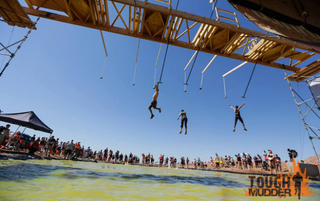
Week 5
Monday 5-8 rounds, 60 seconds’ rest
- 10 press-ups
- 10 dumbbell thrusters
- 10 burpees
- Tabata mountain climbers: 8 rounds, 20 seconds on, 10 seconds rest
Tuesday Run 5 miles (8.05km) run with a 4kg weight in a rucksack
Wednesday Rest
Thursday 5 rounds, 60 seconds’ rest
- 5 dumbbell thrusters
- 10 tuck jumps
- 15 lunges
- 20 squats
Friday Run 5 miles (8.05km) run with a 4kg weight in a rucksack
Saturday Run up a hill, carrying a 4-6kg weight in a rucksack. Run for 90 seconds, rest for 30 seconds. 8-12 rounds.
Sunday Rest
Week 6
Monday 8-12 rounds, 60 seconds’ rest
- 20 kettlebell swings
- 10 squat thrusts
- 10 box jumps
Tuesday Run 6 miles (9.65km). Every mile (1.61km) do 15 press-ups
Wednesday Rest
Thursday 5 rounds, 60 seconds’ rest
- 10 tuck jumps
- 10 dumbbell thrusters
- 10 ball slams
- 10 box jumps
Friday Run 6 miles (9.65km). Every mile (1.61km) do 15 press-ups
Saturday 5-8 rounds, 60 seconds’ rest
- 10 press-ups
- 10 dumbbell thrusters
- 10 burpees
Sunday Rest
Week 7
Monday 5 rounds, 60 seconds’ rest
- 10 pull-ups
- 20 press-ups
- 30 squats
Tuesday Run 7 miles (11.27km)
Wednesday Rest
Thursday 5 rounds, 60 seconds’ rest
- 5 dumbbell thrusters
- 10 tuck jumps
- 15 lunges
- 20 squats
Friday Run 7 miles (11.27km)
Saturday Run up a hill, carrying a 4-6kg weight in a rucksack. Run for 90 seconds, rest for 30 seconds. 8-12 rounds.
Sunday Rest
Week 8 (Race week)
Monday 8-12 rounds, 60 seconds’ rest
- Tabata burpees: 8 rounds, 20 seconds on, 10 seconds’ rest
- 5 pull-ups
- 10 press-ups
- 15 jump squats
Tuesday Run 4 miles (6.44km)
Wednesday Rest
Thursday Rest
Friday Rest
Saturday Triumphantly race your first Tough Mudder
Sunday Party/research when the next Tough Mudder is
Find out more about Glenn Higgins Fitness
Between 2010 and 2016, Ben was the deputy editor of Men’s Fitness UK, which predated, and then shared a website with, Coach. Ben also contributed exclusive features to Coach on topics such as football drills, triathlon training plans and healthy eating.


